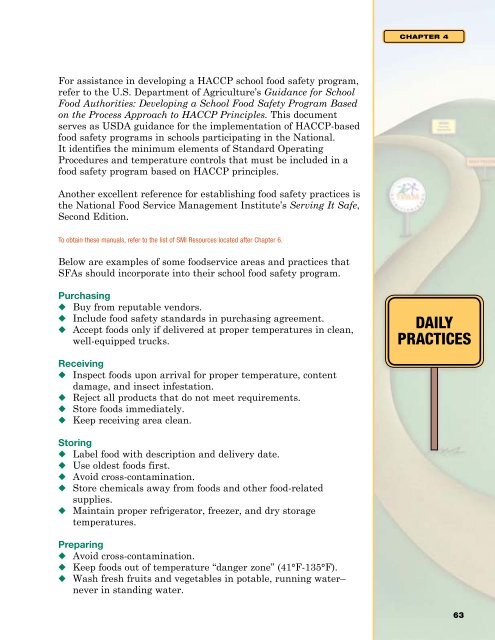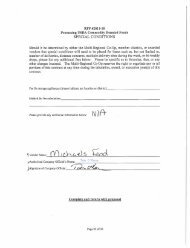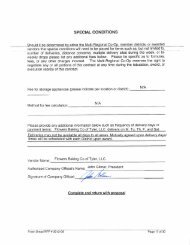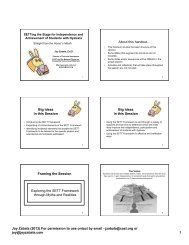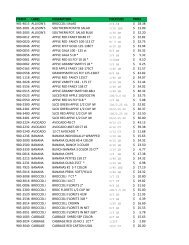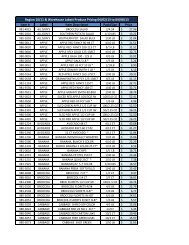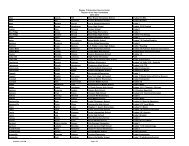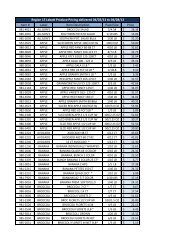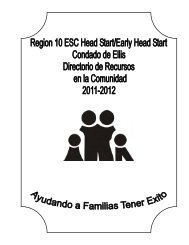Road to SMI Success Manual - Region 10 Education Service Center
Road to SMI Success Manual - Region 10 Education Service Center
Road to SMI Success Manual - Region 10 Education Service Center
You also want an ePaper? Increase the reach of your titles
YUMPU automatically turns print PDFs into web optimized ePapers that Google loves.
Chapter 4<br />
For assistance in developing a HACCP school food safety program,<br />
refer <strong>to</strong> the U.S. Department of Agriculture’s Guidance for School<br />
Food Authorities: Developing a School Food Safety Program Based<br />
on the Process Approach <strong>to</strong> HACCP Principles. This document<br />
serves as USDA guidance for the implementation of HACCP-based<br />
food safety programs in schools participating in the National.<br />
It identifies the minimum elements of Standard Operating<br />
Procedures and temperature controls that must be included in a<br />
food safety program based on HACCP principles.<br />
Another excellent reference for establishing food safety practices is<br />
the National Food <strong>Service</strong> Management Institute’s Serving It Safe,<br />
Second Edition.<br />
To obtain these manuals, refer <strong>to</strong> the list of <strong>SMI</strong> Resources located after Chapter 6.<br />
Below are examples of some foodservice areas and practices that<br />
SFAs should incorporate in<strong>to</strong> their school food safety program.<br />
Purchasing<br />
◆ Buy from reputable vendors.<br />
◆ Include food safety standards in purchasing agreement.<br />
◆ Accept foods only if delivered at proper temperatures in clean,<br />
well-equipped trucks.<br />
Daily<br />
Practices<br />
Receiving<br />
◆<br />
◆<br />
◆<br />
◆<br />
Inspect foods upon arrival for proper temperature, content<br />
damage, and insect infestation.<br />
Reject all products that do not meet requirements.<br />
S<strong>to</strong>re foods immediately.<br />
Keep receiving area clean.<br />
S<strong>to</strong>ring<br />
◆ Label food with description and delivery date.<br />
◆ Use oldest foods first.<br />
◆ Avoid cross-contamination.<br />
◆ S<strong>to</strong>re chemicals away from foods and other food-related<br />
supplies.<br />
◆ Maintain proper refrigera<strong>to</strong>r, freezer, and dry s<strong>to</strong>rage<br />
temperatures.<br />
Preparing<br />
◆ Avoid cross-contamination.<br />
◆ Keep foods out of temperature “danger zone” (41°F-135°F).<br />
◆ Wash fresh fruits and vegetables in potable, running water–<br />
never in standing water.<br />
63 63


